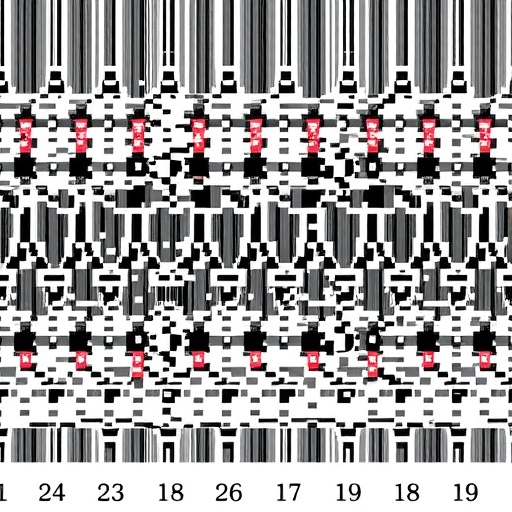
Credit: i-yunmai
Three simple factors that predict whether a healthy weight child will be overweight or obese by adolescence have been revealed in a new study led by the Murdoch Children’s Research Institute (MCRI).
The research shows three factors – a child’s and mother’s Body Mass Index (BMI) and the mother’s education level – predict the onset or resolution of weight problems by adolescence, especially from age 6-7 years onwards.
Each one-unit higher BMI when the child is aged 6-7 years increased the odds at 14-15 years of developing weight problems by three-fold and halved the odds of resolution.
Similarly, every one-unit increase in the mother’s BMI when the child is aged 6-7 years increased the odds at 14-15 years of developing weight problems by 5 per cent and decreased the odds of resolution by about 10 per cent.
Mothers having a university degree was associated with lower odds of a child being overweight and obese at ages 2-5 years and higher odds of resolving obesity issues by adolescence.
Study author MCRI’s Dr Kate Lycett said the prevalence of being overweight/obese at the age of 14-15 years was 13 per cent among children with none of these three risk factors at age 6-7 years, compared with 71 per cent among those with all risk factors.
Dr Lycett said identifying these three factors may help clinicians predict which children will develop and resolve excess weight with about 70 per cent accuracy.
“In the case of BMI, it is an objective measure that is easily measured and reflects diet and exercise choices, but is free from the challenges of assessing physical activity and diet in a standard clinical appointment such as recall bias,” she said.
The findings, published in the latest edition of the International Journal of Obesity, also found children who are overweight or obese at 2-5 years have a low chance of resolving their weight problems by adolescence when these three risk factors are present.
Data was sourced from 3469 participants at birth and 3276 participants at kinder from the Longitudinal Study of Australian Children. The child’s height and weight were measured every two years.
Dr Lycett said until now most studies have overlooked the important questions around which children are likely to become overweight/obese and how it be resolved.
“Because clinicians haven’t been able to tell which children will grow up to become teens with excess weight, it’s been hard to target interventions for those most at risk,” she said.
“The consequences of this are dire, with childhood obesity predicting premature death and being implicated in cardiovascular disease, diabetes and cancer.”
The study examined how combinations of 25 potential short clinical markers such as time breastfeeding and amount of outdoor activity at various ages predict weight issues, as well as resolution, by ages 10-11 and 14-15 years.
Intriguingly, short questions about poor diet, low physical activity and other common lifestyle factors were not predictive of weight outcomes.
Lead author Professor Markus Juonala, from the University of Turku in Finland, said a simple risk score, which would be easily available to child health clinicians, could help target treatment or prevention.
“Combining data on these three easily obtainable risk factors may help clinicians make appropriate decisions targeting care to those most at risk of adolescent obesity,” he said.
“The benefits of removing a focus on those unlikely to need clinical interventions for obesity has largely been ignored, despite an increasing policy emphasis on avoiding wasteful or unnecessary health care.”
###
Researchers from Turku University Hospital, Deakin University, the University of Melbourne, The University of Auckland, the University of Tasmania and The Royal Children’s Hospital also contributed to the findings.
Publication: Markus Juonala, Ted Lau, Melissa Wake, Anneke Grobler, Jessica A. Kerr, Costan G Magnussen, Matthew A Sabin, David P. Burgner and Kate Lycett. ‘Early clinical markers of overweight/obesity onset and resolution by adolescence: Longitudinal Study of Australian Children,’ International Journal of Obesity. DOI: 10.1038/s41366-019-0457-2
Prof Juonala was supported by Juho Vainio Foundation and federal research grants to Turku University Hospital. Prof Wake was supported by NHMRC Senior Research Fellowship 1046518 and Cure Kids New Zealand. Dr Magnussen is supported by a National Heart Foundation of Australia Future Leader Fellowship (100849). Prof Burgner is supported by NHMRC Senior Research Fellowship 1064629 and an Honorary Future Leader Fellowship of the National Heart Foundation of Australia (100369). Dr Lycett was supported by NHMRC Early Career Fellowship (1091124) and Honorary National Heart Foundation of Australia Postdoctoral Fellowship (101239). Research at the Murdoch Children’s Research Institute research is supported by the Victorian Government’s Operational Infrastructure Program.
Media Contact
Bridie Byrne
[email protected]
040-366-4416
Original Source
https:/
Related Journal Article
http://dx.





